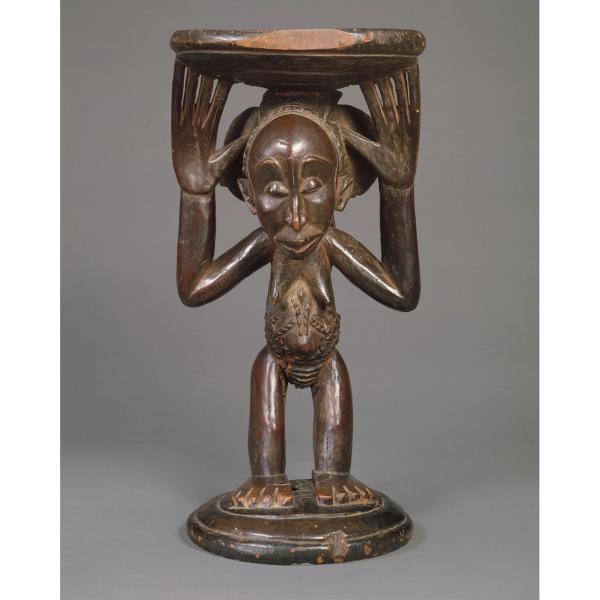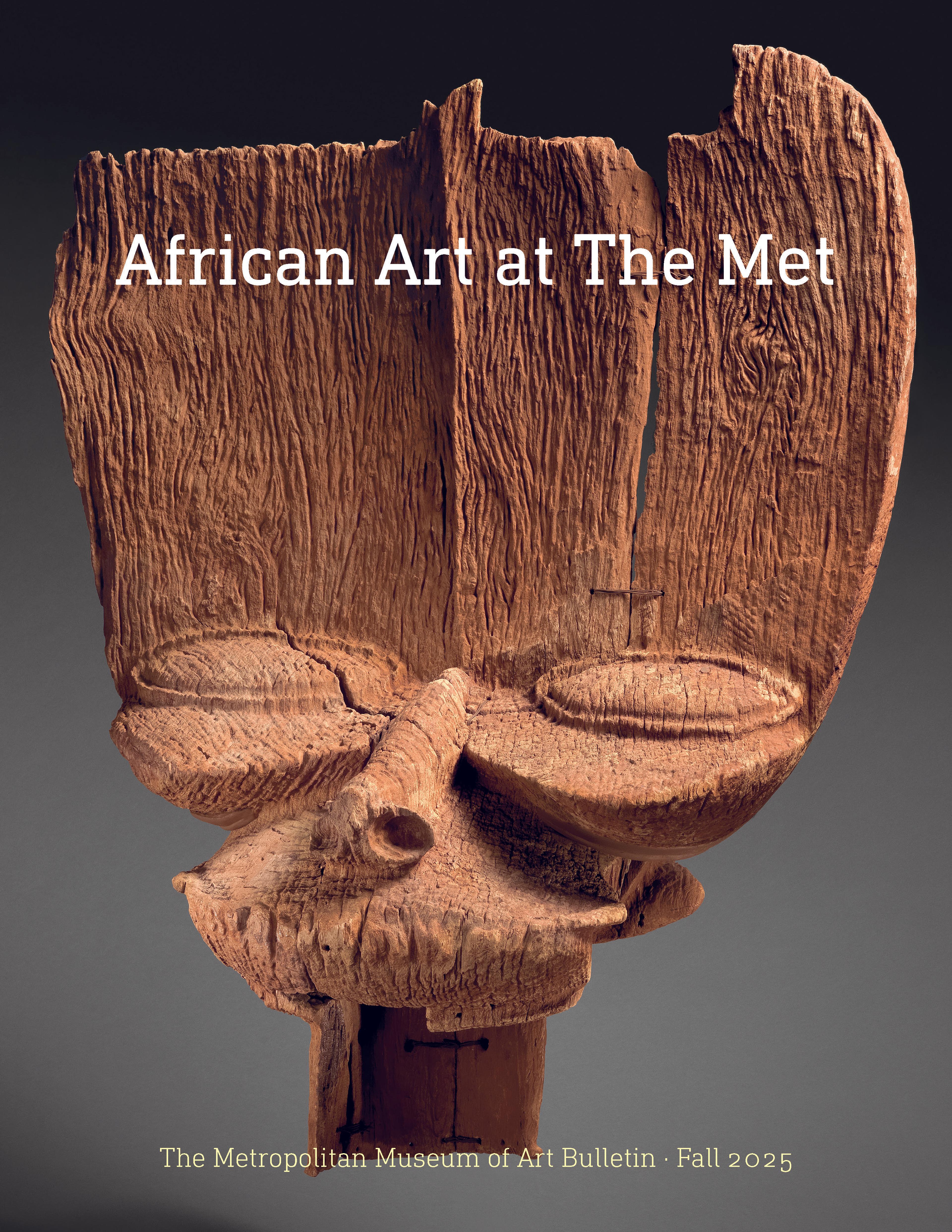Lupona (royal seat)
The seat of this royal Luba stool is supported by a standing female figure who balances it on her head and the tips of her elongated fingers. Her small, pear-shaped body is detailed with elaborate cicatrization markings on the stomach and abdomen that, in past generations, enhanced a woman's body as signs of beauty and civilization. Despite being a patriarchal society, the Luba peoples trace succession and inheritance through the female line. Consequently, caryatid figures that support chiefs' stools generally depict female ancestors. This Luba sculptural tradition was designed to identify and glorify the king, chiefs, and titled officials who constituted the complex hierarchy of leadership within the Luba empire.
Within this tradition of royal Luba artifacts, the styles of a few artists have come to be recognized and singled out. This Luba chief's ceremonial stool has been attributed to Ngongo ya Chintu, formerly known as the "Buli Master", one of the best-known sculptors of traditional African art, who was named by European scholars after a village in the eastern region of the Democratic Republic of the Congo where a number of his works were collected. The stool is part of a corpus of about twenty stylistically related works. Many of these entered European collections around 1900, and it is believed that the Buli Master was active in the middle to late nineteenth century.
Ngongo ya Chintu has been recognized for his ability to imbue his works with particular emotional intensity. Other formal characteristics of his corpus include enlarged, flattened hands turned palm forward; a heavy, four-lobed coiffure crisply undercut at the back of the neck; and an expressive, mournful face. With its slightly aquiline nose, arching brows, and pursed lips, the face wears an expression often interpreted as suffering by Western viewers. The entire sculpture, carved of a single piece of soft wood, is now covered with a lustrous patina, the result of multiple applications of oil to the stool's surface.
Artwork Details
- Title:Lupona (royal seat)
- Artist:Ngongo ya Chintu, formerly known as the "Buli Master" (ca. 1810-1870, Kateba region, Democratic Republic of the Congo)
- Date:ca. 1840–1870
- Geography:Democratic Republic of the Congo, Kateba village region
- Culture:Luba or Hemba peoples
- Medium:Wood, metal studs
- Dimensions:H. 24 × W. 11 × D. 11 in. (61 × 27.9 × 27.9 cm)
- Classification:Wood-Furniture
- Credit Line:Purchase, Buckeye Trust and Charles B. Benenson Gifts, Rogers Fund and funds from various donors, 1979
- Object Number:1979.290
- Curatorial Department: The Michael C. Rockefeller Wing
Audio

1595. Lupona (royal seat), Ngongo ya Chintu
Alison Saar
ANGELIQUE KIDJO (NARRATOR): The royal seat is held by a woman with powerful, exaggerated hands. Her eyes are downturned, her face a picture of melancholic reflection and resilience.
ALISON SAAR: What’s really beautiful about this piece is how she’s supporting upon her head and shoulders the weight of the chief. It feels that without her support, it would all sort of crumble and cease to exist.
My name is Alison Saar. I’m an artist working in sculpture that is influenced and informed by the African diaspora.
It’s always really incredible for me to see these works as a sculptor working in wood primarily myself. It’s truly a collaboration between the artist and the material, in terms of how far you can push it and what the wood will allow itself to be formed into.
ANGELIQUE KIDJO: When viewed in profile, you can see one of the most ornate and important aspects of the sculpture: the woman’s elaborate hairstyle.
ALISON SAAR: You know, for me, hair kind of tells the story. I think being biracial and looking very white and having curly hair, I felt like that was one of the things that really connected me to my African American ancestry through my mother’s family.
And to see how prominent hair and hairstyles were in the work of the Luba was really fascinating. Hairstyles will tell how many children a woman has or whom she’s married to or what her class is and what her ancestry is—these hairstyles tell stories and have really significant meaning in the community.
More Artwork
Research Resources
The Met provides unparalleled resources for research and welcomes an international community of students and scholars. The Met's Open Access API is where creators and researchers can connect to the The Met collection. Open Access data and public domain images are available for unrestricted commercial and noncommercial use without permission or fee.
To request images under copyright and other restrictions, please use this Image Request form.
Feedback
We continue to research and examine historical and cultural context for objects in The Met collection. If you have comments or questions about this object record, please contact us using the form below. The Museum looks forward to receiving your comments.
